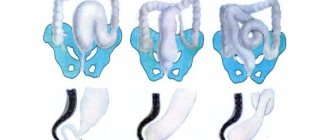The lips have very thin skin, so they are practically not protected from external influences. Because of this, every person has to deal with various lip diseases at least once in their life. In medicine they have a common name - cheilitis.
. There are about a dozen varieties of this disease.
Reasons why lip diseases develop
Human lips are very vulnerable, which often leads to redness, irritation, dryness, and even the formation of wounds and crusts. Most often, cheilitis develops under the influence of external factors.
: low temperature, wind, sun rays. Under their influence, the skin around the mouth dries out, which in itself is unpleasant. If you don't do anything about it, the problem will only get worse.
The second factor that causes lip diseases is various allergens. The culprit of the pathological reaction can be both food and cosmetics. Problems in the functioning of the internal systems of the body can also affect the face.
Most often, the delicate skin around the mouth suffers due to hormonal imbalances, fungal and viral infections. Vitamin deficiency, indigestion and general deterioration of immunity can aggravate the situation.
There are also less common causes of lip disease. They usually lead to certain types of cheilitis.
Continuous geography
Often, during an examination, the doctor asks: “Show your tongue!”: by its appearance, one can suspect symptoms of a variety of diseases. But the tongue also has its own specific diseases. One of them is desquamative glossitis, in which the surface layer of the mucous membrane begins to peel off, or, as experts say, slough off. As a result, in some areas of the tongue there are no filiform papillae left at all, and they acquire a bright red color, while a light coating appears on the neighboring ones.
Types of lip diseases
Cheilitis can be divided into several categories. Here are their names:
- exfoliative;
- glandular;
- meteorological;
- actinic;
- atopic;
- eczematous;
- candida.
In addition, there are other diseases that are not related to cheilitis. Therefore, dryness, peeling, crust formation, and a red border near the lips are causes for serious concern and a reason for examining the entire body.
Atopic cheilitis
Atopic cheilitis is sometimes called allergic because it is caused by various irritants. The cause of the disease can be food or cosmetics. It turns out that the allergen affects the skin of the lips both from the inside and outside.
The disease manifests itself as inflammation of the red border of the lips. The skin becomes dry and peels. Cracks, itching and burning may occur.
Most often, children and adolescents suffer from lip allergies. Often it is the only symptom of neurodermatitis or atopic dermatitis.
Glandular cheilitis
Glandular cheilitis is an inflammation of the salivary glands, which are located on the surface of the mucous membrane of the lips.
The disease is more common in men over 50 years of age and is characterized by the following symptoms:
- noticeable red dots appear on the lower lip;
- copious secretion of saliva from the inflamed glands, the appearance of “dew drops”;
- dryness, cracks and erosion;
- Bacteria can enter the irritated canals, leading to the formation of pus.
There are primary and secondary forms of glandular cheilitis. The primary disease develops due to genetic predisposition. Secondary lip disease can be caused by lupus, oral leukoplakia, or lichen planus.
Meteorological cheilitis
People have to deal with this disease all the time. Standard chapping, which more often appears in winter, is meteorological cheilitis.
The first sign of the disease is a feeling of skin tightness. In advanced cases, it turns red, dries out, and becomes covered with cracks. This lip inflammation can be treated at home. It is enough to isolate yourself from harmful factors, moisturize and nourish the skin until it is completely restored.
Eczematous cheilitis
Eczematous cheilitis is one of the manifestations of eczema - an inflammatory process of a neuroallergic nature, which most often manifests itself on the face or dry areas of the body. Usually the disease is accompanied by constant dryness and redness. In advanced cases, the skin begins to peel off and become covered with blisters.
The disease often affects the tissue around the lips, so the patient may develop a red border, as in the photo on the right. This area of skin is constantly itchy and itchy.
If the disease is chronic, the symptoms are less pronounced. But in this case, seals appear on the skin.
Actinic cheilitis
Many people believe that lips need to be protected only in winter. Therefore, it is at this time of year that people stock up on moisturizing and nourishing balms to relieve dry and itchy lips. However, delicate skin must be protected not only from frost, but also from the burning sun.
With increased sensitivity to ultraviolet radiation and prolonged exposure to open areas, actinic cheilitis forms. His symptoms are standard:
- dryness, flaking;
- redness and swelling;
- compaction of individual areas.
If you do nothing, your lips become crusty. This is how the body tries to somehow protect the vulnerable part of the face. This symptom appears less frequently than others.
In advanced cases, ulcers, erosions and small compactions occur around the oral cavity. This condition is precancerous.
Exfoliative cheilitis
The exfoliative form of the disease occurs due to stress and disturbances in the functioning of the immune system. Genetic predisposition plays a major role. If your parents had this disease, there is a high risk that you will develop it too.
Exfoliative cheilitis on the lips occurs in two forms: exudative and dry. In the first case, you can observe the so-called yellow lips (pictured). A dense crust of this shade forms on the skin.
The yellow crust is easy to tear off; this process does not cause much discomfort. There are no erosions or other damage under the crust.
In the dry form of the disease, a crust also forms on the lips, but not yellow, but a lighter shade. The patient is concerned about dry skin, which explains the name of the disease. There is a desire to lick your teeth, but it is better not to do this: you can cause an infection and provoke more irritation.
Candidal cheilitis
If the lips are red, inflamed and crusted with a cheesy coating of white or yellowish color, it means that the cause of these symptoms is candidiasis. If you clean off the plaque, inflamed areas of skin will be exposed. How such a lip disease manifests itself is shown in the photo.
The disease occurs due to the excessive development of the Candida fungus. The pathogen lives on the human mucous membranes constantly, but the active development of the fungus begins only under favorable conditions, which include:
- decreased immunity due to past illnesses or lack of nutrients;
- long-term use of antibiotics;
- a sharp change in climate to a hotter and more humid one.
Fungal inflammation of the lips begins externally, but can spread to the internal tissues of the oral cavity, thus leading to candidal stomatitis.
Lip cancer
Many of these diseases, if not given proper attention to their treatment, lead to cancer. Perhaps this is the most terrible disease that can affect the lips and oral cavity.
At first, the symptoms of cancer are unremarkable. The lips will turn red and there will be slight inflammation. The skin may become dry and cracked. If the patient moisturizes and nourishes the affected tissues, but the lips remain sore for several weeks, he should sound the alarm and consult a specialist. Later, ulcers and lumps may appear.
Usually, if treatment is started correctly and on time, the cancer recedes completely. Only in rare cases are relapses possible.
There is another disease that is compared to cancer - Manganotti syndrome. The disease manifests itself in the form of a noticeable ulcer on the lip, which is precancerous. However, due to the fact that in most cases the syndrome still develops into a tumor, it is more often classified as oncological diseases.
Prevention
As you know, prevention is cheaper than treatment. In addition, preventing a disease is much easier than curing it, although this will require regularly following some rules.
Pay more attention to oral hygiene. To prevent the formation of cracks, it is necessary to protect the skin and mucous membranes of the mouth from adverse effects: unlearn the habit of licking the lips and corners of the mouth, use medicinal cosmetics for dry skin (lipstick, balm, cream). To avoid infection of the skin of the lips from the oral cavity, it is necessary to regularly brush your teeth, see a dentist, and promptly treat caries and inflammatory gum diseases.
Follow the rules of nutrition. If cracks appear in the corners of the mouth, exclude from the diet spicy, sour and salty foods that irritate the mucous membrane and skin. Include less acidic fruits and vegetables in your daily diet, as well as foods containing iron and riboflavin (beef, liver, dairy products, cabbage, potatoes, peanuts, almonds and others).
Give up bad habits. Smoking is a provoking factor in the development of this disease.
Features of cheilitis in children
Lips suffer due to minimal protection. In children it is even weaker, so cheilitis worries them somewhat more often. In addition to children, the risk group includes the elderly and pregnant women.
The main causes of cheilitis in childhood:
- allergic reaction to food;
- use of products for the care of the skin of the lips and around them, not intended for children;
- genetic predisposition;
- infectious and fungal infections;
- weather.
Typically, infantile cheilitis does not develop until critical stages. When children's lips turn red, parents immediately begin to treat them. After all, people pay more attention to the health of the younger generation than to their own. If cheilitis in children still requires treatment, therapy should not be delayed longer than a few weeks. The main thing is to remove all allergens from the children's diet and balance the diet.
Allergic to saxophone?
Did you buy a new lipstick or change your toothpaste? And suddenly my lips were “swept.” What's happened? This is how contact-allergic cheilitis manifests itself. The name itself speaks about the reasons that cause it.
But the culprits of the disease are not only chemicals - sometimes it develops after contact with metal objects. There is even a “professional version” - this type of cheilitis attacks musicians who play wind instruments - the lips react to contact with a metal mouthpiece. Peeling, itching, burning, redness of the lips, and sometimes swelling are unpleasant sensations. The main thing is not to try to get rid of them on your own; you can greatly worsen your condition.
What to do . To find and eliminate the culprit, this most often requires a consultation with an allergist and appropriate examinations to determine the allergen. For treatment, ointments containing corticosteroids, which have antiallergic, antipruritic and anti-inflammatory effects, are used, and antihistamines are also prescribed.
You will also have to watch your diet: give up citrus fruits, strawberries, chocolate, caviar and other foods that can provoke allergic reactions.
How to treat lips with cheilitis
The most important thing in treating cheilitis is to identify its cause, which is difficult to do without professional help. You'll have to contact a specialist. First, it is better to go to a therapist, and he will then refer you to a specialist doctor.
Typically, treatment for diseases of the lips and skin around the mouth is based on eliminating not the symptoms, but the root cause. It includes lifestyle changes, proper nutrition, and medication.
If the cause of inflammation is an infectious or fungal infection, local drugs are included in the therapy. Typically, patients are prescribed various medicinal ointments for external use, which must be applied to damaged skin several times a day:
- anti-inflammatory – Tetracycline, Erythromycin;
- antifungal – Clotrimazole;
- hormonal – Prednisolone.
To cure lips, you need to influence them not only from the outside, but also from the inside. The skin around the mouth often suffers from a lack of B vitamins, so they are often prescribed in the treatment of lips.
Treatment
Cheilitis requires specific treatment depending on the type and cause of its formation. Many people faced with this problem have a reasonable question about which doctor treats cheilitis. Oddly enough, you need to see a dentist.
The most commonly prescribed treatments are zinc ointment, hydrocortisone, prednisolone ointment or solcoseryl for allergic manifestations and mild damage to the epithelial layer. Depending on the complexity of the situation and the external manifestations of the disease, the doctor will explain to you how to smear the lesions and with what frequency so that they heal faster.
Some types of cheilitis on the lips require only local treatment, which consists of eliminating external causes of the disease and damage to the mucous membrane and skin of the lips. In others, complete sanitation of the oral cavity and careful treatment of diseased areas with oil solutions of vitamins are necessary. In addition, your doctor may advise you to frequently rinse your mouth with anti-inflammatory and wound-healing agents such as chamomile, oak bark, and calendula.
More serious medications are prescribed only for severe lesions and the need to treat the primary disease that caused the inflammatory process. There are also cases when surgical intervention is indicated.
Is cheilitis contagious? If we are not talking about a viral cause of the development of inflammation on the lips, there is nothing to fear, since external manifestations are only a consequence of internal problems in the body.
How to get rid of unpleasant symptoms at home
It is not worth treating at home without seeing a doctor. However, there are ways that you can resort to to reduce discomfort:
- If your lips become inflamed due to the sun or cold, it is advisable that they are always covered with a protective layer of balm.
- For severe itching and burning, which occur in almost all forms of cheilitis, cold compresses will help. Before applying them, the skin is covered with a layer of balm so that the lips are treated simultaneously with the reduction of pain.
- If your lips are red and covered with cracks, sores or any other open wounds, you need to make sure that bacteria do not get into them. The surrounding skin and teeth should be treated with a cotton pad soaked in hydrogen peroxide or Miramistin. Special antiseptic ointments will have the best effect.
- If pain and itching are unbearable, painkillers can be used. Ointments with a cooling effect will have the same effect.
All methods of folk treatment for cheilitis will be useless if you resort to them thoughtlessly - without consulting a doctor. In most cases, inflammation, redness and itching of the lips are harmless. Such symptoms can go away even without therapy, but sometimes they indicate dangerous diseases, so medical help should not be neglected.
Diagnostics
The cause of the symptom is determined by a dentist or maxillofacial surgeon. If the pain is neuropathic, a consultation with a neurologist is required; if malignant neoplasia is suspected, an examination by an oncologist is required. For cheilitis, herpes simplex and traumatic injuries, the basis of diagnosis is complaints and examination data; additional studies are not prescribed or are carried out to a minimum extent. Neuralgia is confirmed based on the clinical picture and the results of palpation of trigger points. Taking into account the nature of the disease, the examination plan includes:
- Cytological or histological examination.
It is a basic way to verify the diagnosis of lip cancer and lichen planus. For patients with cheilitis, according to indications, it is performed for differentiation from other pathologies. For herpes simplex, it is carried out if it is necessary to identify the virus. - Other laboratory tests.
Patients with cheilitis are prescribed a biochemical blood test to identify metabolic disorders and possible precipitating diseases. For herpes, PCR, RIF, and ELISA are performed. In patients with lichen planus, accumulation of immunoglobulin M is detected by direct immunofluorescence. - Visualization techniques
. The presence of lichen is indicated by a yellowish-orange glow when examining fingerprint smears under a Wood's lamp. Patients with cancer are shown an ultrasound of the lip and radiography of the lower jaw. If there are signs of metastasis, an extensive examination is carried out, including ultrasound of the abdominal cavity, chest X-rays.
Visual inspection of lips
If hair grows in your mouth
Of course, this does not happen, but sometimes it seems that the tongue is covered with... hair. The fact is that thread-like papillae grow on the tongue, and their length can reach one and a half centimeters, and they become like hairs. This phenomenon is observed in cases of impaired immunity, in response to certain medications that disrupt the microflora of the oral cavity, as well as in patients with chronic gastritis and colitis. There is nothing wrong with this, but the patient experiences unpleasant sensations that create constant discomfort.
What to do . If possible, you should stop taking medications and take only antihistamines. After 5–10 days, the “hair” on the tongue will disappear. And don’t forget to brush not only your teeth, but also your tongue twice a day.









